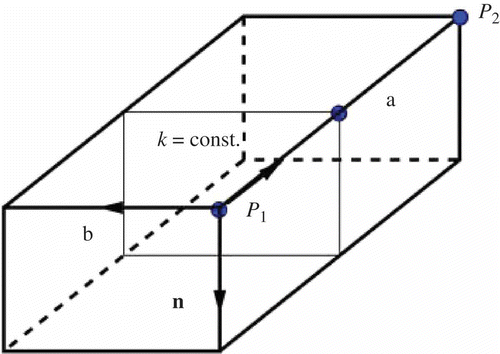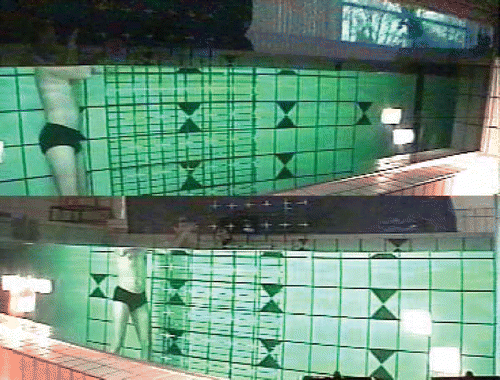Figures & data
Figure 1. Two pictures from animation of breaststroke swimming. Left: trajectory of the hand in an external reference frame (black curve through feet, mass centre and head); right: the same movement relative to the mass centre (closed black curve).

Figure 4. The box model of the area where water particle displacement occurs. P 1 is a wrist point and P 2 the finger tip. The hand moves in the direction n.

Figure 5. Left shoulder torque of two elite crawl stroke swimmers. Left figure: deep arm pull, v-flow = 1.6 m/s, t cycle = 1.1 s. Right figure: perpendicular lower and upper arm and pressure on forearm until the arm is leaving the water, v-flow = 1.55 m/s, t cycle = 1.3 s.

Figure 6. Dolphin stroke at v-flow = 1.78 m/s, t cycle = 1.1 s; shoulder and hip torques. Right figure: The velocity of the mass centre in swimming direction is added as a black solid line.

Figure 7. Dolphin stroke at v-flow = 1.78 m/s; contribution of foot, shank and thigh to the total hip torque. The shank part of the hip torque is dominant.

Figure 8. Different breaststroke techniques, shoulder torques. Left figure: swimming technique at v-flow = 1.15 m/s. Right figure: swimming technique at v-flow = 1.65 m/s.

Figure 9. Breaststroke, left hip torques. Left figure: swimming technique at v-flow = 1.15 m/s. Right figure: swimming technique at v-flow = 1.65 m/s.




